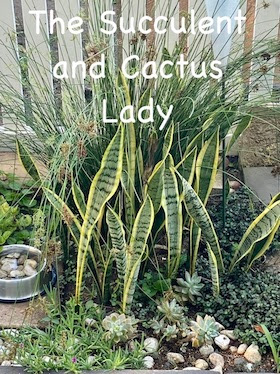About me

🌿 I've been gardening ever since a child, when I spent time with my father in his vegetable garden. But my fascination with Echeverias started in the 1980's, when my father gave me a pot with five Echeverias, which turned out to be E. imbricata. At first I wasn't much interested in them and planted them in some obscure corner of the garden and completely forgot about them. How great was my surprise when, a couple of months later, I noticed that they had spread and made a beautiful display - I was hooked!
Pages
Thursday 9 April 2015
Shade-loving Aloe zebrina
Family : Asphodelaceae
Common names : zebra leaf aloe, spotted aloe
Aloe zebrina is a small, variable, stemless compact succulent. The succulent leaves of Aloe zebrina are densely clustered into a rosette and have a slightly channelled upper surface. The colour of the leaves varies greatly but they are usually green and marked with large oblong whitish spots; the margins are armed with stout, brown-tipped teeth and the leaf tips are dark red to brown. It has pale but striking coral-coloured tubular flowers that occur in rather sparse inflorescences. The fruit is a dehiscing capsule with many seeds. Seeds are dark-coloured and broadly winged, which assists in dispersal.
.
Aloe zebrina is widespread in northern South Africa and is also widely distributed in Namibia, Zambia, Angola, Mozambique and Zimbabwe and is not listed as threatened, mainly due to its wide distribution.
The habitat of Aloe zebrina is normally dry thickets and may include marshy meadows on river banks. It suckers freely and therefore forms dense groups. Blooms are mainly found from February to May, but also June to August. The pollination is performed by birds and this aloe does equally well in shade or full sun.
In north-western Botswana, the roots of Aloe zebrina are among the main dyes for the Hyphaene palm fibres, which are used in weaving baskets, to give them a golden-yellow colour. The method was adopted for wool dyeing by European settlers who modified it to create better colours with other metallic mordants. The roots can easily be collected on a sustainable basis because of the plant's ability to readily form new roots.
The people along the Kunene River in Angola prepare cakes from the pressed and boiled flowers. The powdered stem and leaf bases are taken medicinally by women after delivery to cleanse their system. The (bitter) juice of many Aloe species is used as a disinfectant for wounds, as worm expellant and also to treat skin problems.
Aloe zebrina has potential for cultivation in arid to semi-arid, frost-free locations.
.












